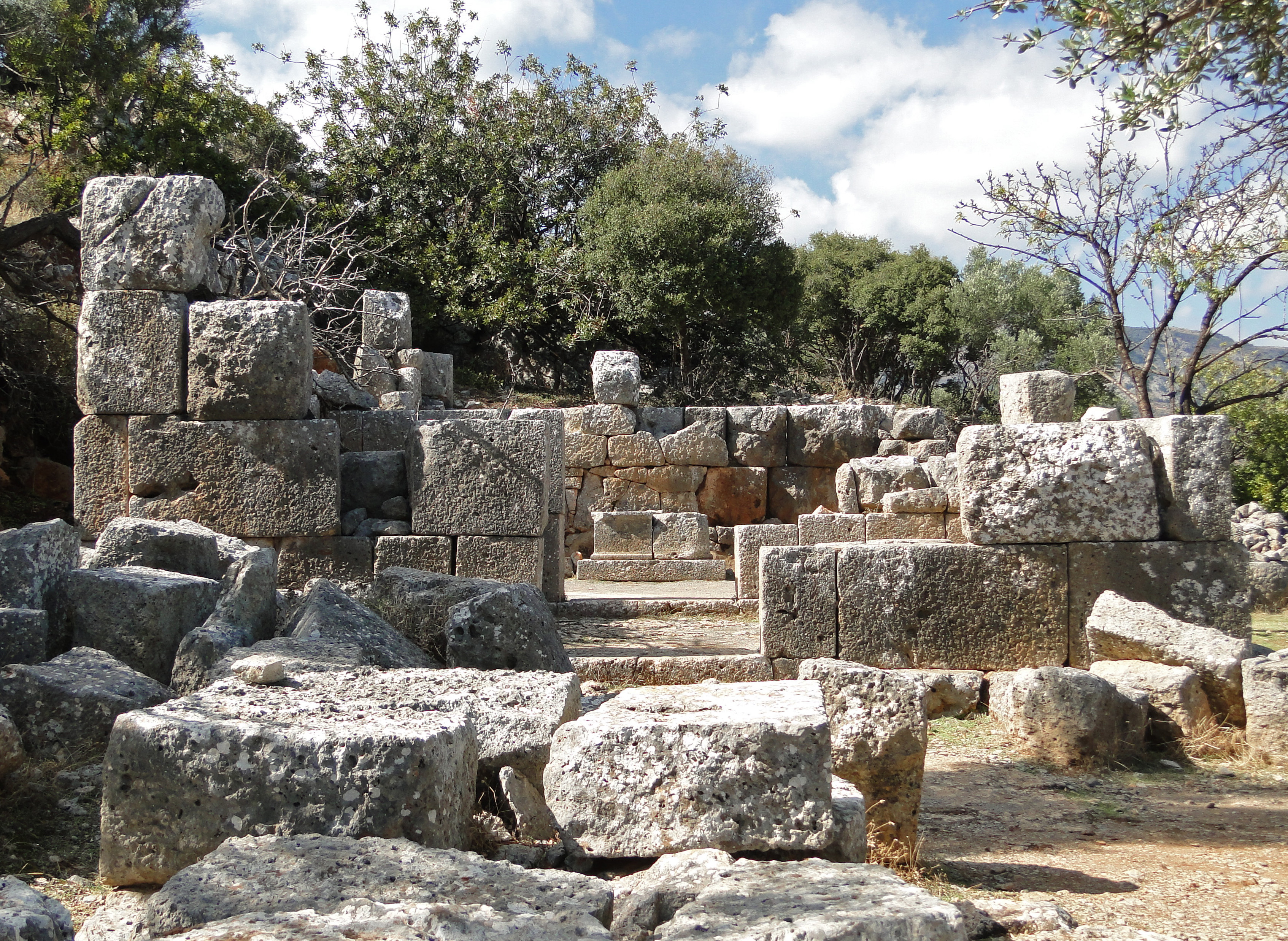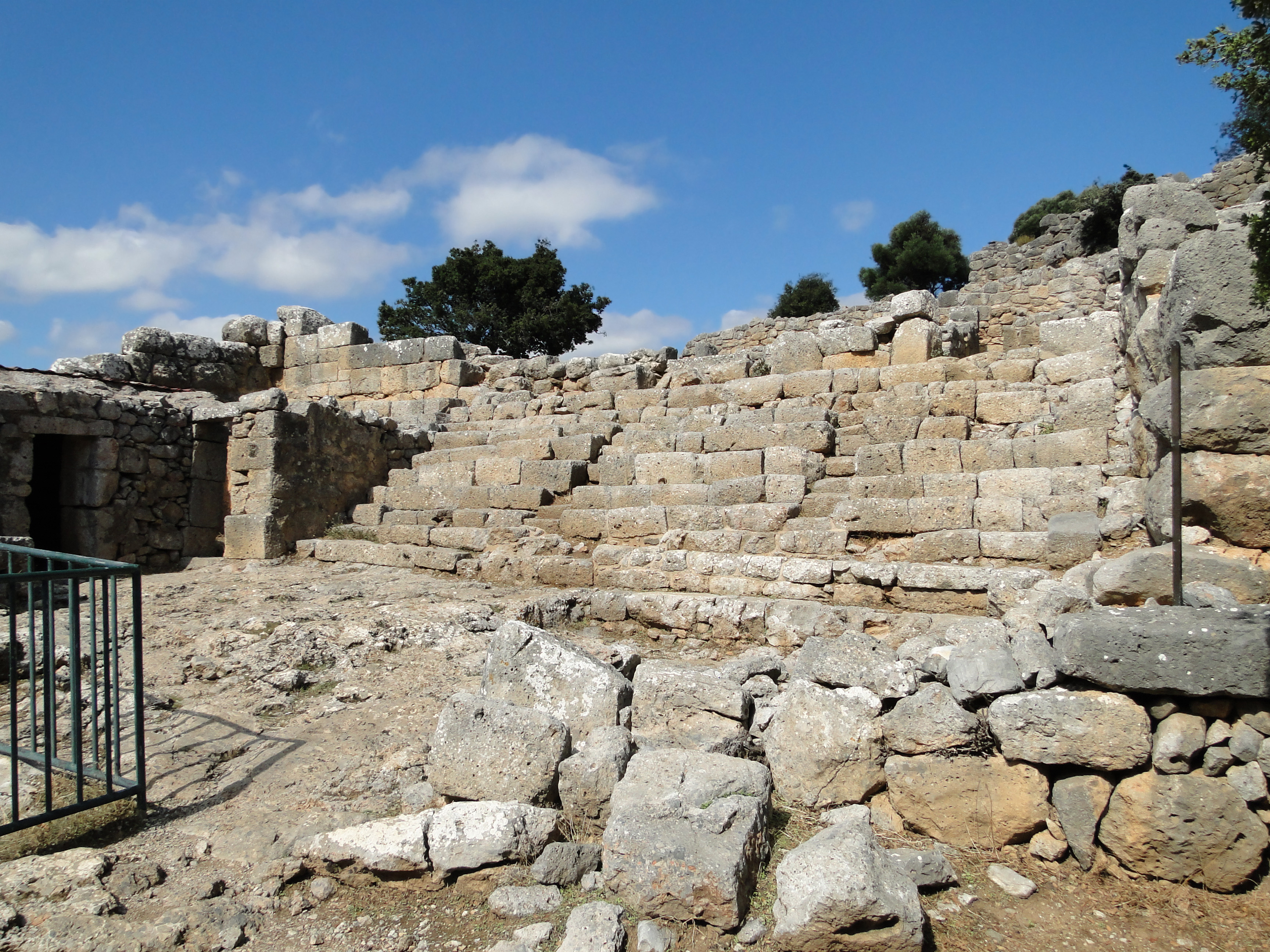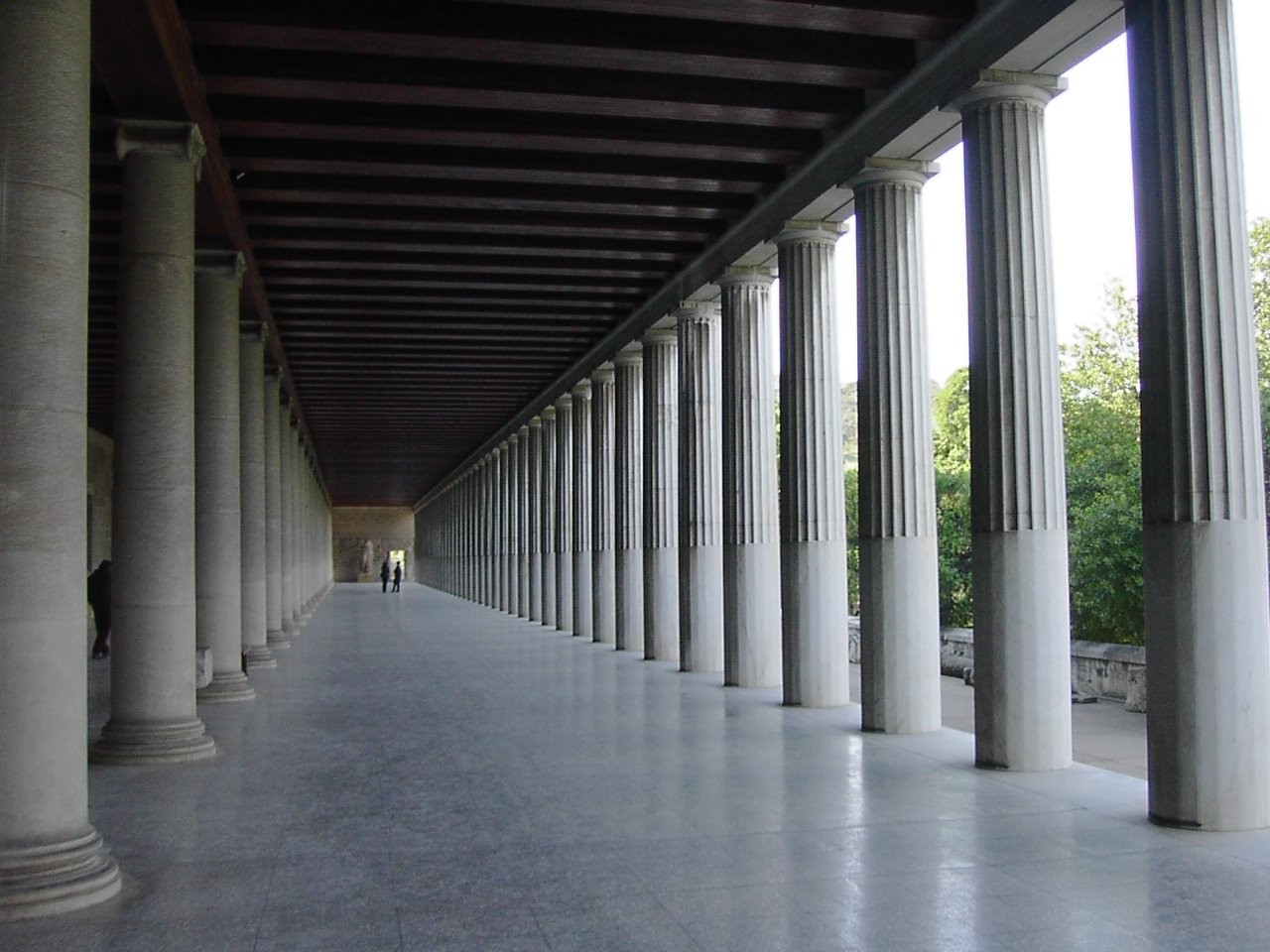|
Lato
Lato () was an ancient city of Crete, the ruins of which are located approximately 3 km from the village of Kritsa. History The Dorian city-state was built in a defensible position overlooking Mirabello Bay between two peaks, both of which became acropolises to the city. Although the city probably predates the arrival of the Dorians, the ruins date mainly from the Dorian period (5th and 4th centuries BCE). The city was destroyed c. 200 BCE, but its port (Lato Etera or Lato pros Kamara), located near Agios Nikolaos was in use during Roman rule. This has led to the confusion: Stephanus of Byzantium, for example, quoted Xenion, a 3rd-century Cretan historian, repeating the latter's error that Kamara and Lato were one and the same. Modern scholarship distinguishes the two. The city most likely was named after the goddess Leto (of which Lato is the usual Doric form) and may be mentioned in Linear B tablets as RA-TO. [...More Info...] [...Related Items...] OR: [Wikipedia] [Google] [Baidu] |
Leto
In ancient Greek mythology and Ancient Greek religion, religion, Leto (; ) is a childhood goddess, the daughter of the Titans Coeus and Phoebe (Titaness), Phoebe, the sister of Asteria, and the mother of Apollo and Artemis.Hesiod, ''Theogony'404–409/ref> In the Olympian scheme, the king of gods Zeus is the father of her twins, Apollo and Artemis, whom Leto conceived after her hidden beauty accidentally caught the eye of Zeus. During her pregnancy, Leto sought for a place where she could give birth to Apollo and Artemis, since Hera, the wife of Zeus, in her jealousy, ordered all lands to shun her and deny her shelter. Hera is also the one to have sent the monstrous serpent Python (mythology), Python and the giant Tityos against Leto to pursue and harm her. Leto eventually found an island, Delos, that was not joined to the mainland or attached to the ocean floor, therefore it was not considered land or island and she could give birth. In some stories, Hera further tormented L ... [...More Info...] [...Related Items...] OR: [Wikipedia] [Google] [Baidu] |
Greece
Greece, officially the Hellenic Republic, is a country in Southeast Europe. Located on the southern tip of the Balkan peninsula, it shares land borders with Albania to the northwest, North Macedonia and Bulgaria to the north, and Turkey to the east. The Aegean Sea lies to the east of the Geography of Greece, mainland, the Ionian Sea to the west, and the Sea of Crete and the Mediterranean Sea to the south. Greece has the longest coastline on the Mediterranean Basin, spanning List of islands of Greece, thousands of islands and nine Geographic regions of Greece, traditional geographic regions. It has a population of over 10 million. Athens is the nation's capital and List of cities and towns in Greece, largest city, followed by Thessaloniki and Patras. Greece is considered the cradle of Western culture, Western civilisation and the birthplace of Athenian democracy, democracy, Western philosophy, Western literature, historiography, political science, major History of science in cl ... [...More Info...] [...Related Items...] OR: [Wikipedia] [Google] [Baidu] |
Alexander The Great
Alexander III of Macedon (; 20/21 July 356 BC – 10/11 June 323 BC), most commonly known as Alexander the Great, was a king of the Ancient Greece, ancient Greek kingdom of Macedonia (ancient kingdom), Macedon. He succeeded his father Philip II of Macedon, Philip II to the throne in 336 BC at the age of 20 and spent most of his ruling years conducting Wars of Alexander the Great, a lengthy military campaign throughout West Asia, Western Asia, Central Asia, parts of South Asia, and ancient Egypt, Egypt. By the age of 30, he had created one of the List of largest empires, largest empires in history, stretching from History of Greece, Greece to northwestern History of India, India. He was undefeated in battle and is widely considered to be one of history's greatest and most successful military commanders. Until the age of 16, Alexander was tutored by Aristotle. In 335 BC, shortly after his assumption of kingship over Macedon, he Alexander's Balkan campaign, campaigned in the Bal ... [...More Info...] [...Related Items...] OR: [Wikipedia] [Google] [Baidu] |
Eileithyia
Eileithyia or Ilithyia (; ; (''Eleuthyia'') in Crete, also (''Eleuthia'') or (''Elysia'') in Laconia and Messene, and (''Eleuthō'') in literature)Nilsson Vol I, p. 313 was the Greek goddess of childbirth and midwifery, and the daughter of Zeus and Hera. In the cave of Amnisos (Crete) she was related with the annual birth of the divine child, and her cult is connected with ''Enesidaon'' (the earth shaker), who was the chthonic aspect of the god Poseidon. It is possible that her cult is related with the cult of Eleusis. In his ''Seventh Nemean Ode'', Pindar refers to her as the maid to or seated beside the Moirai (Fates) and responsible for the creation of offspring. Her son was Sosipolis, who was worshiped at Elis. Etymology The earliest form of the name is the Mycenaean Greek , ''e-re-u-ti-ja'', written in the Linear B syllabic script. Ilithyia is the latinisation of '. The etymology of the name is uncertain, but debated among scholars. R. S. P. Beekes suggests a ... [...More Info...] [...Related Items...] OR: [Wikipedia] [Google] [Baidu] |
Dorians
The Dorians (; , , singular , ) were one of the four major ethnic groups into which the Greeks, Hellenes (or Greeks) of Classical Greece divided themselves (along with the Aeolians, Achaeans (tribe), Achaeans, and Ionians). They are almost always referred to as just "the Dorians", as they are called in the earliest literary mention of them in the ''Odyssey'', where they already can be found inhabiting the island of Crete. They were diverse in way of life and social organization, varying from the populous trade center of the city of Ancient Corinth, Corinth, known for its ornate style in art and architecture, to the isolationist, military state of Sparta; and yet, all Hellenes knew which localities were Dorian and which were not. Dorian states at war could more likely, but not always, count on the assistance of other Dorian states. Dorians were distinguished by the Doric Greek dialect and by characteristic social and historical traditions. In the 5th century BC, Dorians and Ion ... [...More Info...] [...Related Items...] OR: [Wikipedia] [Google] [Baidu] |
Ancient Rome
In modern historiography, ancient Rome is the Roman people, Roman civilisation from the founding of Rome, founding of the Italian city of Rome in the 8th century BC to the Fall of the Western Roman Empire, collapse of the Western Roman Empire in the 5th century AD. It encompasses the Roman Kingdom (753–509 BC), the Roman Republic (50927 BC), and the Roman Empire (27 BC476 AD) until the fall of the western empire. Ancient Rome began as an Italic peoples, Italic settlement, traditionally dated to 753 BC, beside the River Tiber in the Italian peninsula. The settlement grew into the city and polity of Rome, and came to control its neighbours through a combination of treaties and military strength. It eventually controlled the Italian Peninsula, assimilating the Greece, Greek culture of southern Italy (Magna Graecia) and the Etruscans, Etruscan culture, and then became the dominant power in the Mediterranean region and parts of Europe. At its hei ... [...More Info...] [...Related Items...] OR: [Wikipedia] [Google] [Baidu] |
Linear B
Linear B is a syllabary, syllabic script that was used for writing in Mycenaean Greek, the earliest Attested language, attested form of the Greek language. The script predates the Greek alphabet by several centuries, the earliest known examples dating to around 1450 BC. It is adapted from the earlier Linear A, an undeciphered script perhaps used for writing the Minoan language, as is the later Cypriot syllabary, which also recorded Greek. Linear B, found mainly in the Minoan palace, palace archives at Knossos, Kydonia, Pylos, Thebes, Greece, Thebes and Mycenae, disappeared with the fall of Mycenaean Greece, Mycenaean civilization during the Late Bronze Age collapse. The succeeding period, known as the Greek Dark Ages, provides no evidence of the use of writing. Linear B was deciphered in 1952 by English architect and self-taught linguist Michael Ventris based on the research of American classicist Alice Kober. It is the only Bronze Age Aegean script to have been deciphered, w ... [...More Info...] [...Related Items...] OR: [Wikipedia] [Google] [Baidu] |
Hellenistic Greece
Hellenistic Greece is the historical period of Ancient Greece following Classical Greece and between the death of Alexander the Great in 323 BC and the annexation of the classical Greek Achaean League heartlands by the Roman Republic. This culminated at the Battle of Corinth in 146 BC, a crushing Roman victory in the Peloponnese that led to the destruction of Corinth and ushered in the period of Roman Greece. Hellenistic Greece's definitive end was with the Battle of Actium in 31 BC, when Octavian defeated Ptolemaic queen Cleopatra VII and Mark Antony, the next year taking over Alexandria, the last great center of Hellenistic Greece. The Hellenistic period began with the wars of the Diadochi, armed contests among the former generals of Alexander the Great to carve up his empire in Europe, Asia, and North Africa. The wars lasted until 275 BC, witnessing the fall of both the Argead and Antipatrid dynasties of Macedonia in favor of the Antigonid dynasty. The era was al ... [...More Info...] [...Related Items...] OR: [Wikipedia] [Google] [Baidu] |
Lato Pros Kamara
__NOTOC__ Lato pros Kamara or simply Kamara or Camara (Ancient Greek: ) was an ancient city of Crete, situated to the east of Olous, according to the Maritime Itinerary at a distance of 15 stadia (approximately ). It is currently the site of Agios Nikolaos, Crete. Lato pros Kamara was settled in the late Bronze Age as the population of Dorian Lato realised greater security. Its expanding population settled the coastal area, which had been subject to greater likelihood of marine attack during the earlier Bronze Age. Xenion, a Cretan historian quoted by Stephanus of Byzantium says that it was once called "Lato", however, modern scholarship distinguishes the two,See, for example: placing Lato pros Kamara as the port of Lato. Lato pros Kamara outlasted Lato well into Roman times. See also *Lato *Agios Nikolaos, Crete Agios Nikolaos or Aghios Nikolaos ( ) is a coastal city on the Greece, Greek island of Crete, lying east of the island's capital Heraklion, north of the city of ... [...More Info...] [...Related Items...] OR: [Wikipedia] [Google] [Baidu] |
Agios Nikolaos, Crete
Agios Nikolaos or Aghios Nikolaos ( ) is a coastal city on the Greece, Greek island of Crete, lying east of the island's capital Heraklion, north of the city of Ierapetra and west of the city of Sitia. In 2021, the Agios Nikolaos (municipality), Municipality of Agios Nikolaos, which takes in part of the surrounding villages, had 27,785 inhabitants. The town sits partially upon the ruins of the ancient city of Lato pros Kamara. History Agios Nikolaos was settled in the late Bronze Age by Dorians, Dorian occupants of Lato, at a time when the security of the Lato hillfort became a lesser concern and easy access to the harbour at Agios Nikolaos became more important. The name Agios Nikolaos means ''Saint Nicholas''. Its stress lies on the second syllable of the word "Nikolaos". ''Agios Nikolaos'' or ''Ayios Nikolaos'' (alternative romanization of Greek, romanizations of the Greek ) is a common placename in Greece and Cyprus, since Saint Nicholas is the patron saint of sailors, and ... [...More Info...] [...Related Items...] OR: [Wikipedia] [Google] [Baidu] |
Agora
The agora (; , romanized: ', meaning "market" in Modern Greek) was a central public space in ancient Ancient Greece, Greek polis, city-states. The literal meaning of the word "agora" is "gathering place" or "assembly". The agora was the center of the athletic, artistic, business, social, spiritual, and political life in the city. The Ancient Agora of Athens is the best-known example. Origins Early in Greek history (10th–4th centuries BC), free-born citizens would gather in the agora for military duty or to hear statements of the ruling king or council. Later, the agora also served as a marketplace, where merchants kept stalls or shops to sell their goods amid Arcade (architecture), arcades. This attracted artisans who built workshops nearby. From these twin functions of the agora as a political and a commercial spot came the two Greek verbs , ''agorázō'', "I shop", and , ''agoreúō'', "I speak in public". Ancient Agora of Athens The Ancient Agora of Athens was situat ... [...More Info...] [...Related Items...] OR: [Wikipedia] [Google] [Baidu] |
Arthur Evans
Sir Arthur John Evans (8 July 1851 – 11 July 1941) was a British archaeologist and pioneer in the study of Aegean civilization in the Bronze Age. The first excavations at the Minoan palace of Knossos on the List of islands of Greece, Greek island of Crete began in 1877. They were led by Cretan Greek Minos Kalokairinos, a native of Heraklion. Three weeks later Ottoman authorities forced him to stop (at the time, Ottoman Crete, Crete was under Ottoman rule). Almost three decades later, Evans heard of Kalokairinos' discovery. With private funding, he bought the surrounding rural area including the palace land. Evans began his own excavations in 1900. Based on the structures and artefacts found there and throughout the eastern Mediterranean, Evans found that he needed to distinguish the Minoan civilisation from Mycenaean Greece. Evans was also the first to define the Cretan scripts Linear A and Linear B, as well as an earlier pictographic writing. Biographical background Fam ... [...More Info...] [...Related Items...] OR: [Wikipedia] [Google] [Baidu] |









